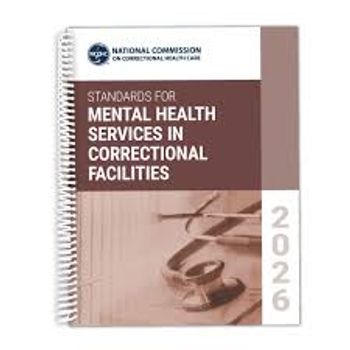
- Vol 34 No 1
- Volume 34
- Issue 1
Committed: The Battle Over Involuntary Psychiatric Care
Here's a review of a book about involuntary psychiatric commitment-- a major source of controversy when the public tries to understand who psychiatrists are and what we do.
BOOK REVIEW
By Dinah Miller, MD and Annette Hanson, MD;
Baltimore, MD: Johns Hopkins University Press; 2016
328 pages • $22.95 (hardcover)
In an era of extreme clashes between opposing opinions about involuntary psychiatric commitment, it is refreshing-indeed therapeutic-to encounter a thoughtful, balanced treatment of this contentious and important topic in the book,
Drs. Dinah Miller and Annette Hanson, both seasoned clinicians who have worked in a diverse range of settings, have produced one of the most important and readable contributions to this discussion that I have encountered. This is actually a book on psychiatric ethics, but it is presented in a disarming, journalistic style. The ethical tensions with which this issue is loaded are unpacked in a clear, accessible way, articulating not just the questions, but also offering sensible and realistic conclusions.
Particularly compelling are interviews, both with patients who have experienced involuntary commitment, as well as with advocacy organizations on all points of the spectrum of opinion. The latter include voices from familiar groups such as the National Alliance on Mental Illness and the Treatment Advocacy Center, unfamiliar organizations like MindFreedom, and even places that psychiatrists typically dare not tread-like Scientology.
Dr. Miller’s interviewing style shows the openness and receptivity of a trained psychiatrist. Some representatives of organizations particularly opposed to involuntary treatment display illuminating thoughtfulness. Others have, perhaps naively, failed to accept that we have learned much about major psychiatric disorders and what treatments work and approaches that can worsen them. Yet the authors remain remarkably respectful and non-judgmental, letting interviewees speak for themselves. At times I wish they would have educated the lay reader to appreciate just how uninformed and outdated certain ideas are.
Candid and sensitive interviews with patients who have suffered from the way in which commitment and involuntary treatment were deployed are groundbreaking. For psychiatrists, who often develop feelings of stewardship for our patients’ vulnerabilities, it will touch your heart. You may gain a new appreciation of what a patient who is being committed endures. Indeed, authors describe how their own practices and feelings were altered in the course of writing the book. There are some case examples of people who felt they were helped by involuntary treatment. Not surprisingly, these patients were committed for severe suicidality, rather than psychosis.
The authors interview some other remarkable people: a patient who was involuntarily committed who went on to become a psychiatrist; a crisis intervention police officer who is followed into the field; and the celebrated Judge Leifman in Dade County, Florida, who has accomplished reform in mental health approaches for the incarcerated that is becoming a model of its kind.
Beyond the conundrum of hospital admission against a patient’s will, the authors delve into involuntary treatments that can occur once a patient is hospitalized. Starting from a compelling personal anecdote, Dr. Hanson, a forensic inpatient psychiatrist, leads us through a very reasoned and experienced discussion of seclusion and restraints. She concludes that restraining a patient is, in rare cases, necessary-especially when staff and patient safety is a concern.
There is a robust chapter on Assisted Outpatient Treatment (AOT). The laws in different states are so diverse and inconsistent that it is somewhat overwhelming to metabolize the highly variegated array of processes, strengths, and loopholes in all states. Maybe that was the intended effect. Yet readers might welcome a more systematic and organized presentation, perhaps sorted into different categories of features or limitations. Overall, though, the message conveyed is that AOT, without extensive (and expensive) services to accompany it, is unlikely to be very effective: “It must come with services that obligate society to the best interests of the individual patient.”
The authors make an interesting and timely diversion into the loosely related issue of guns and mental illness. They conclude that the majority of behaviors that would make people likely to shoot others may reflect unstable traits and coping mechanisms, not specific psychiatric diagnoses, or even necessarily “mental illness” at all.
In the final chapter, the recommendations for changes in how we practice and run our institutions, as well as how we train our staff, courts, and correctional officers, serve as a manifesto for the future of mental health care. This is worth the purchase price alone.
Overall, the authors make a strong case-not against involuntary treatment, but how it is done, and the threshold for its use. Speaking specifically to treating professionals, they write:
Involuntary treatment needs to be limited to situations where the only agenda is the best interest of the patient after other options to engage the patient have been exhausted. . . . If you start with the idea that involuntary care may be traumatizing, you do it much less often and much more thoughtfully. . . . We’d like to refocus mental health professionals to consider this possibility: involuntary psychiatric care may be damaging. It may never be appreciated, and the fear of forced care prevents many from seeking treatment. . . . It’s simply not possible to write a script with the exact guidelines for what to do when the question comes up about usurping a patient’s autonomy. The only clear answer is in retrospect.
This is the rare book that will appeal to trainees, seasoned professionals, and lay readers alike.
Disclosures:
Dr. Komrad is Ethicist-in-Residence for the Sheppard Pratt Health System in Baltimore, MD. He is on the Faculty of Psychiatry at Johns Hopkins and the University of Maryland. He reports no conflicts of interest concerning the subject matter of this article.
Articles in this issue
almost 9 years ago
Introduction: Cognition, Rarely Discussedalmost 9 years ago
Lithium Therapy, Bipolar Disorder- and Neurocognitionalmost 9 years ago
To Google or Not to Google? Is “Patient-Targeted” Googling Ethical?almost 9 years ago
Opioid Analgesics: The Myths-and the Factsalmost 9 years ago
Medical Marijuana and Dementia-Associated Agitation: Stirring the Potalmost 9 years ago
Eight Enemies of Good Writing for the Lay Readeralmost 9 years ago
A Coin Flipalmost 9 years ago
An Update on Melancholiaalmost 9 years ago
Take Two Pills and ...Newsletter
Receive trusted psychiatric news, expert analysis, and clinical insights — subscribe today to support your practice and your patients.













